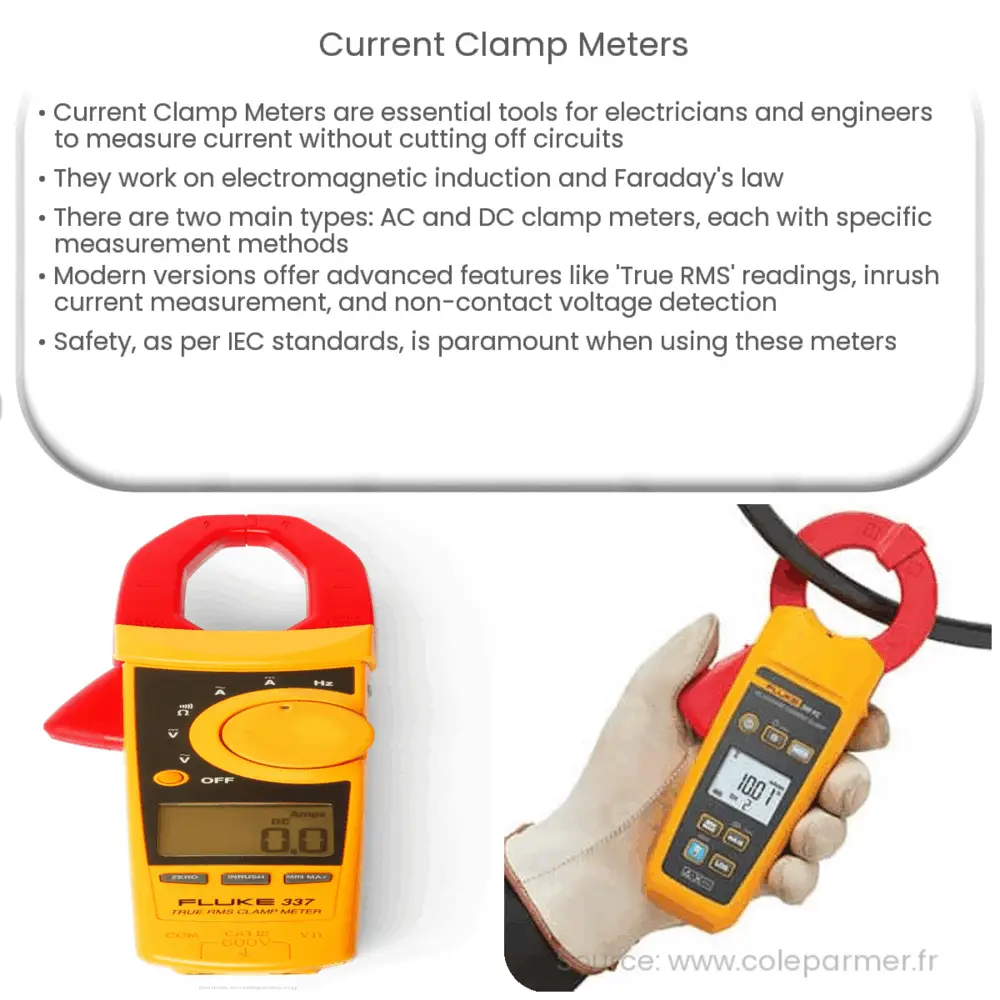Explore the basics of Current Clamp Meters, their types, working principles, key features, and safety considerations in our comprehensive guide.

Introduction to Current Clamp Meters
Electrical professionals frequently encounter situations where they need to measure current flowing through a conductor. A Current Clamp Meter, also known as a clamp-on ammeter, plays an indispensable role in these scenarios. It is a versatile tool used by electricians and engineers for various electrical measurements without the need to cut off the circuit or touch any live wire.
The Working Principle
The working principle of a current clamp meter revolves around the concepts of electromagnetic induction. It encapsulates Faraday’s law, which states that a change in the magnetic field within a loop of wire induces an electromotive force (EMF) in the wire.
- 1 When the clamp is positioned around a conductor, a magnetic field is created as the current flows through it.
- 2 The meter detects this change in the magnetic field and converts it into an electrical signal.
- 3 The signal is then processed and displayed on the meter’s screen as a current reading.
Types of Current Clamp Meters
Primarily, there are two types of clamp meters: AC (alternating current) clamp meters and DC (direct current) clamp meters.
- AC Clamp Meters: These meters can only measure AC currents. They use a transformer to pick up on the magnetic field changes around the wire.
- DC Clamp Meters: DC clamp meters measure DC currents. They use a Hall Effect sensor to capture the magnetic field changes around the wire.
Features of a Good Current Clamp Meter
Choosing a current clamp meter involves considering various key features to ensure accuracy, safety, and versatility. These include:
- Resolution and Range: These two features determine the smallest increment that can be measured and the maximum current that the meter can safely measure, respectively.
- Data Hold Function: This function allows the meter to “freeze” a measurement on the display, enabling the user to read and record the measurement conveniently.
Advanced Features and Considerations
While basic clamp meters are indeed useful, many modern versions offer additional advanced features that can significantly enhance their utility. These features may include:
- True RMS Readings: ‘True RMS’ clamp meters provide accurate measurements of both sinusoidal and non-sinusoidal AC waveforms. This feature is crucial for professional electricians working in complex electrical installations.
- Inrush Current Measurement: This feature is helpful in capturing the surge of current when an equipment starts, known as the ‘inrush current’. It is particularly useful when troubleshooting motors and transformers that experience startup issues.
- Non-contact Voltage Detection: This allows the meter to detect live voltage without making direct contact, adding an extra level of safety for the user.
Safety Considerations
When working with electricity, safety is paramount. It is crucial to ensure that the clamp meter being used is appropriately rated for the job at hand. The International Electrotechnical Commission (IEC) has developed safety standards such as the CAT III and CAT IV ratings. A CAT III-rated meter is safe for use in most buildings, while a CAT IV-rated meter can be safely used outdoors and in industrial locations.
Conclusion
In conclusion, the Current Clamp Meter is an indispensable tool in the toolkit of any electrician or electrical engineer. Its ability to measure current safely and accurately without interrupting the circuit provides a practical and efficient method for diagnosing and troubleshooting electrical issues. Whether used for basic current measurements or more advanced features like inrush current measurements or non-contact voltage detection, a good quality clamp meter is an investment in safety and efficiency. As technology continues to evolve, it’s exciting to consider the future possibilities and advancements in clamp meter technology. Always remember to choose the appropriate clamp meter for your specific needs and to use it with utmost attention to safety.

